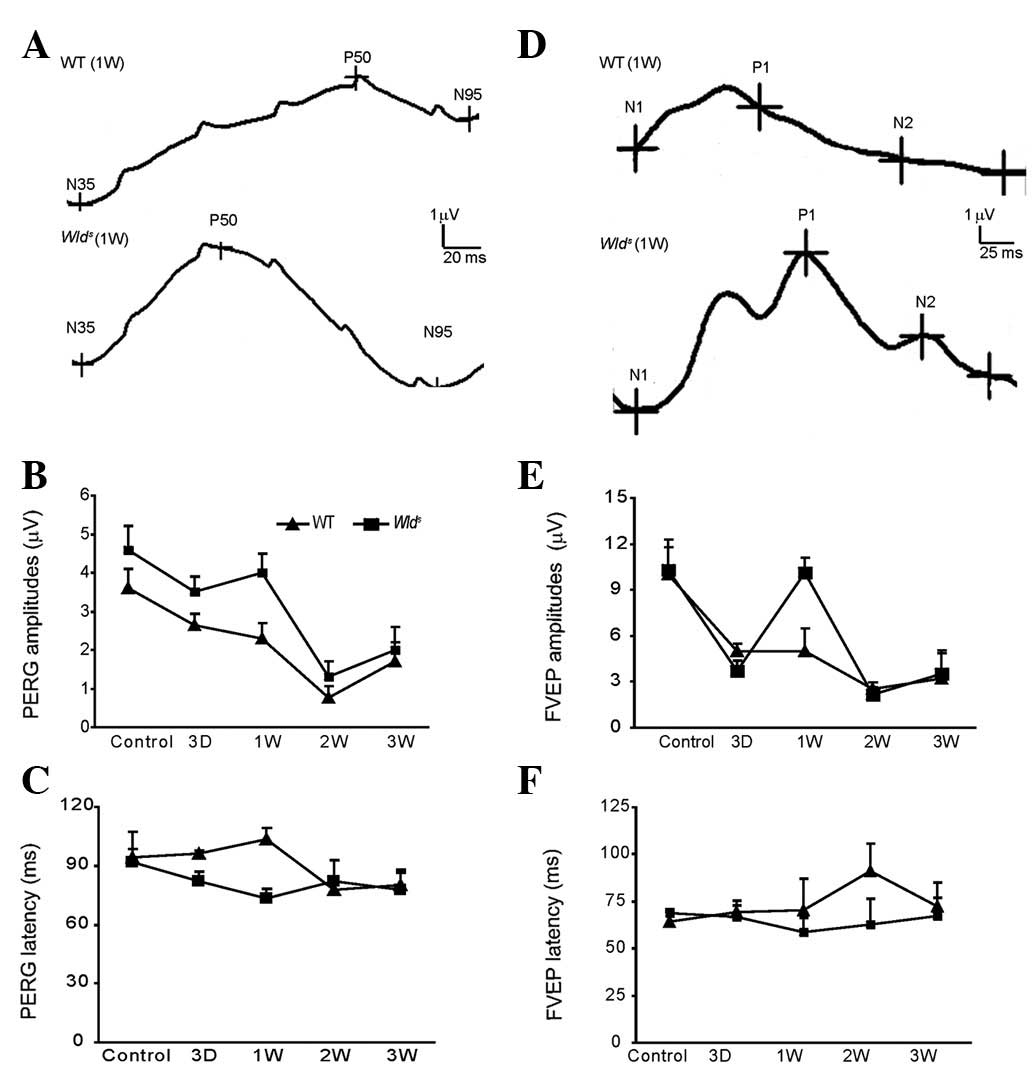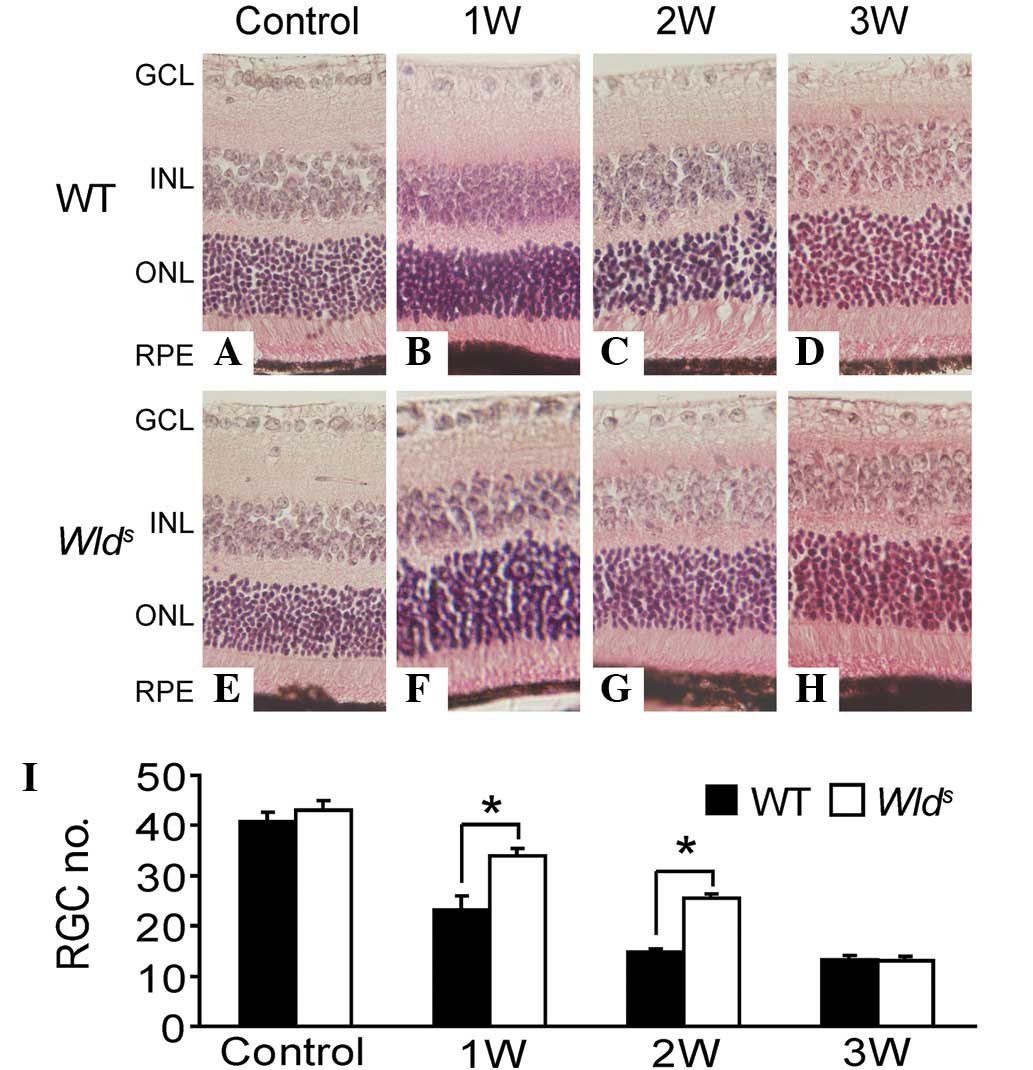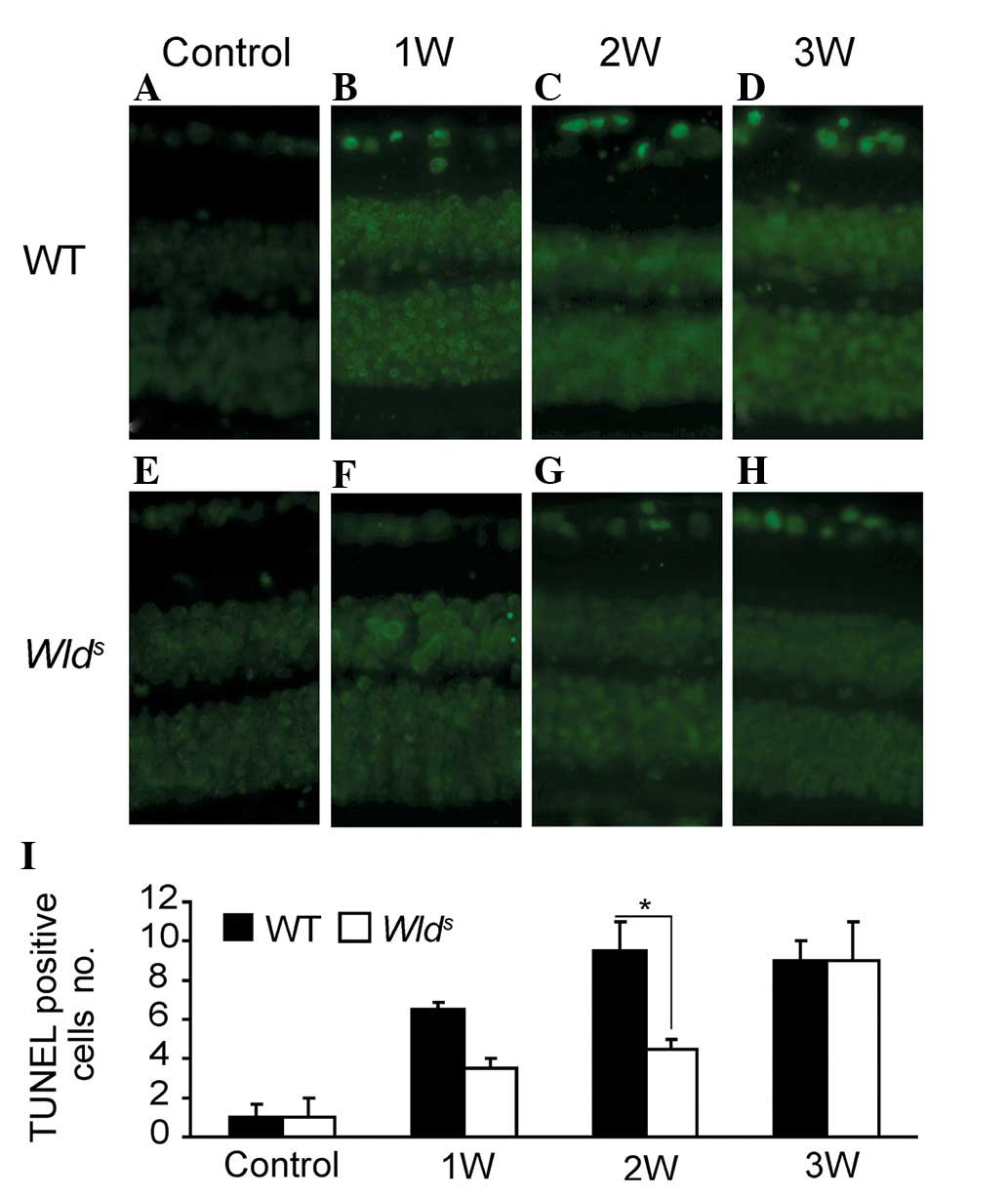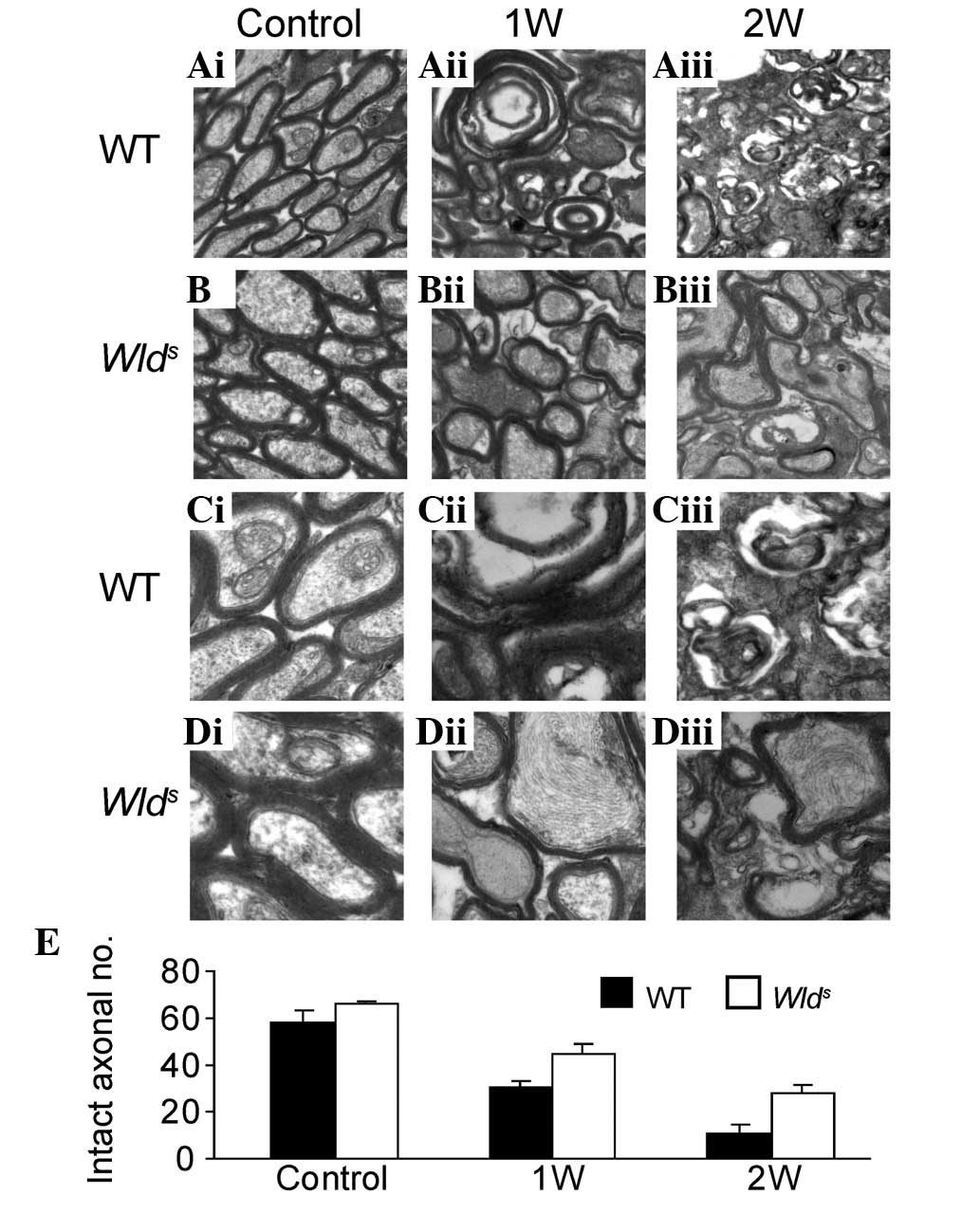Protective role of Wallerian degeneration slow (Wlds) gene against retinal ganglion cell body damage in a Wallerian degeneration model
- Authors:
- Published online on: November 30, 2012 https://doi.org/10.3892/etm.2012.844
- Pages: 621-625
Metrics: Total
Views: 0 (Spandidos Publications: | PMC Statistics: )
Total PDF Downloads: 0 (Spandidos Publications: | PMC Statistics: )
Abstract
Nerve distal axon injury‑induced Wallerian degeneration is significantly delayed in Wallerian degeneration slow (Wlds) mutant mice, although the associated mechanisms are not completely clear and the role of Wlds in retinal ganglion cell (RGC) body damage is not fully understood. In the present study, a Wallerian degeneration model was established in wild‑type (WT) and Wlds mutant mice by creating mechanical injury in the optic nerves. Wallerian degeneration and RGC body collapse were observed to be significantly delayed in the Wlds mice. Electroretinograms (ERG) and visual evoked potentials (VEPs) in Wlds mice were also significantly improved at the earlier stages (one week) following injury. The retina immunohistochemistry results showed that Wlds mice had more ordered cells and improved inner granular cell layer arrangement compared with the WT mice. Optic nerve Luxol Fast Blue (LFB) staining showed greater axon demyelination in WT mice than in Wlds mice. A large number of apoptotic cells were also observed in the WT mice. The present results suggest that the Wlds gene may also protect the RGC body following nerve injury.













